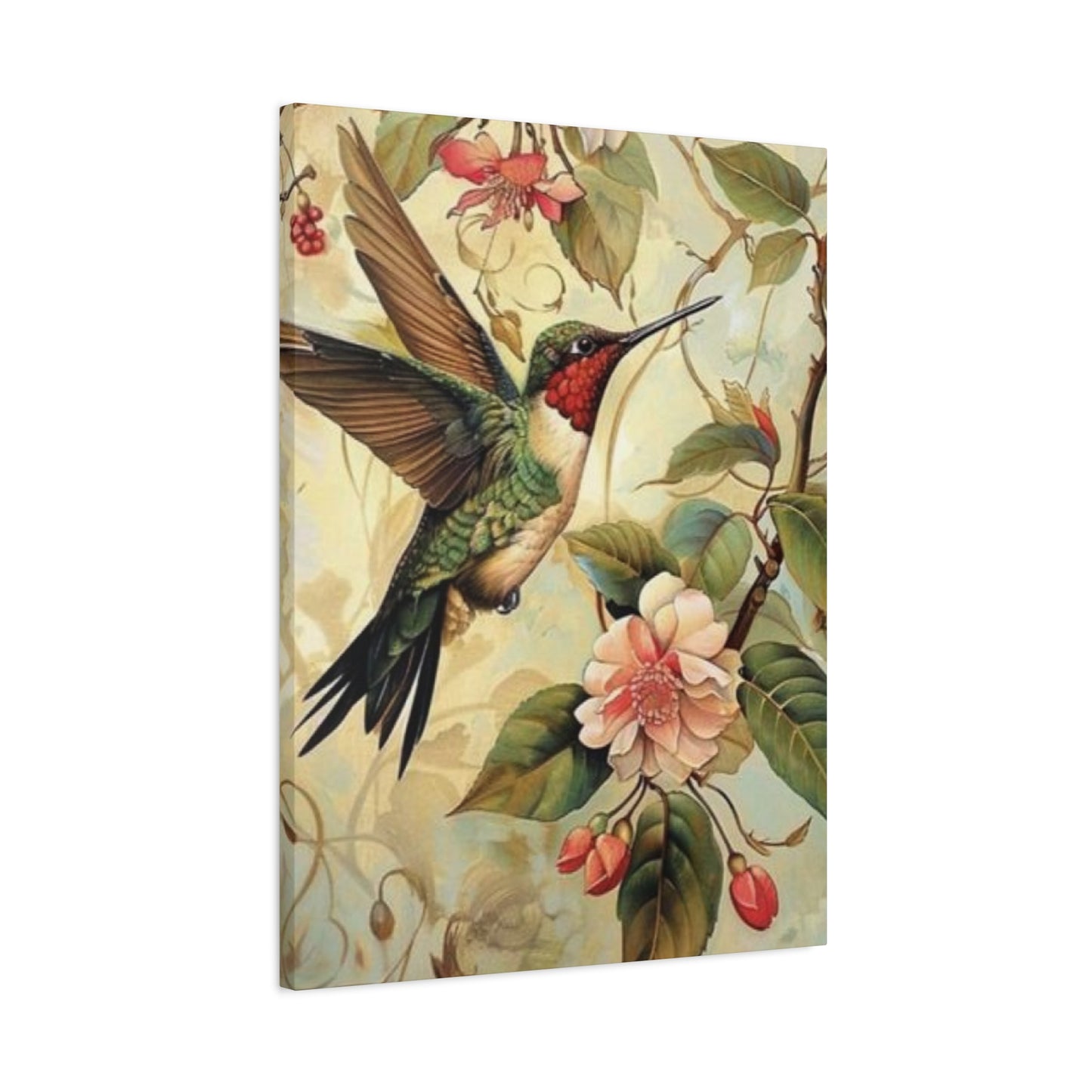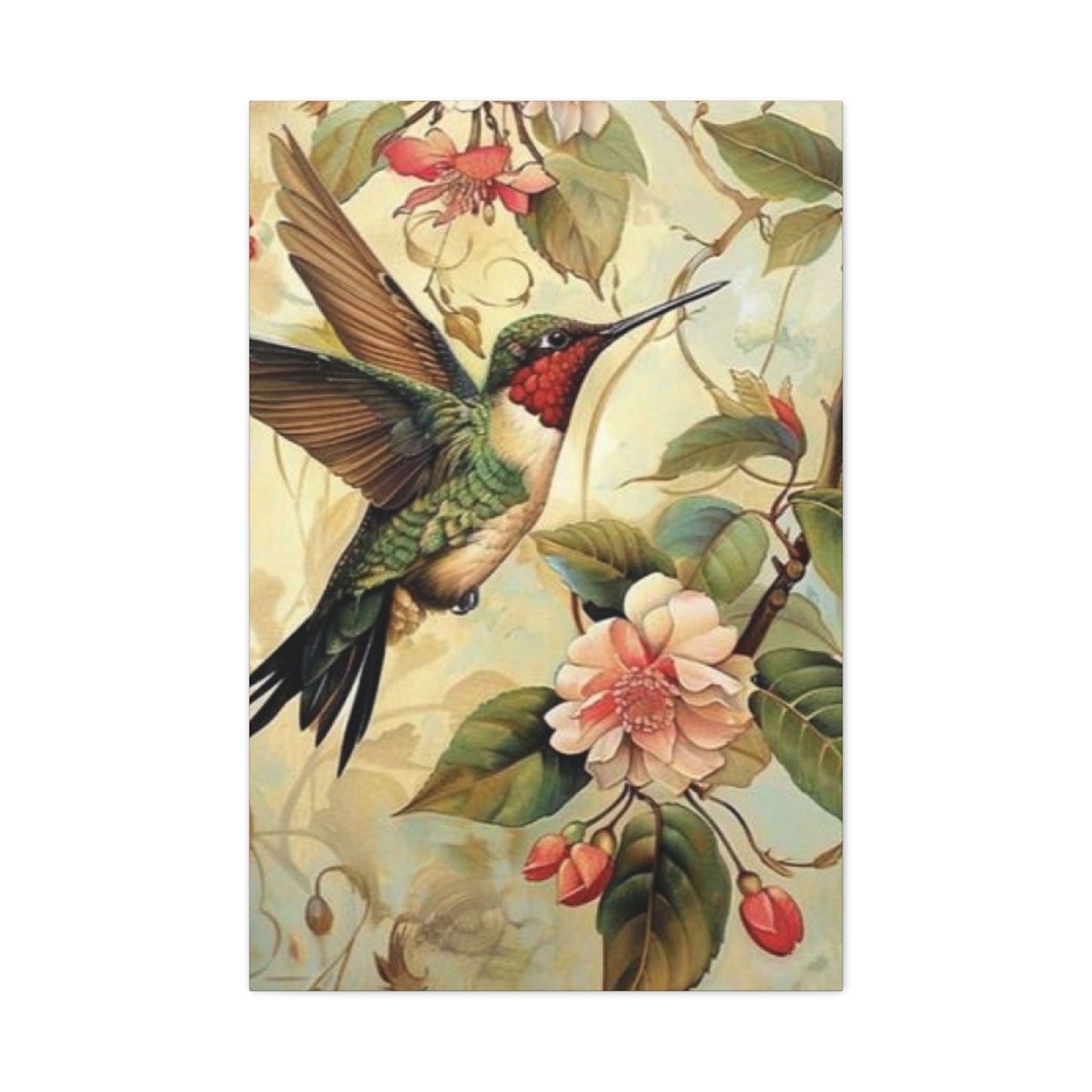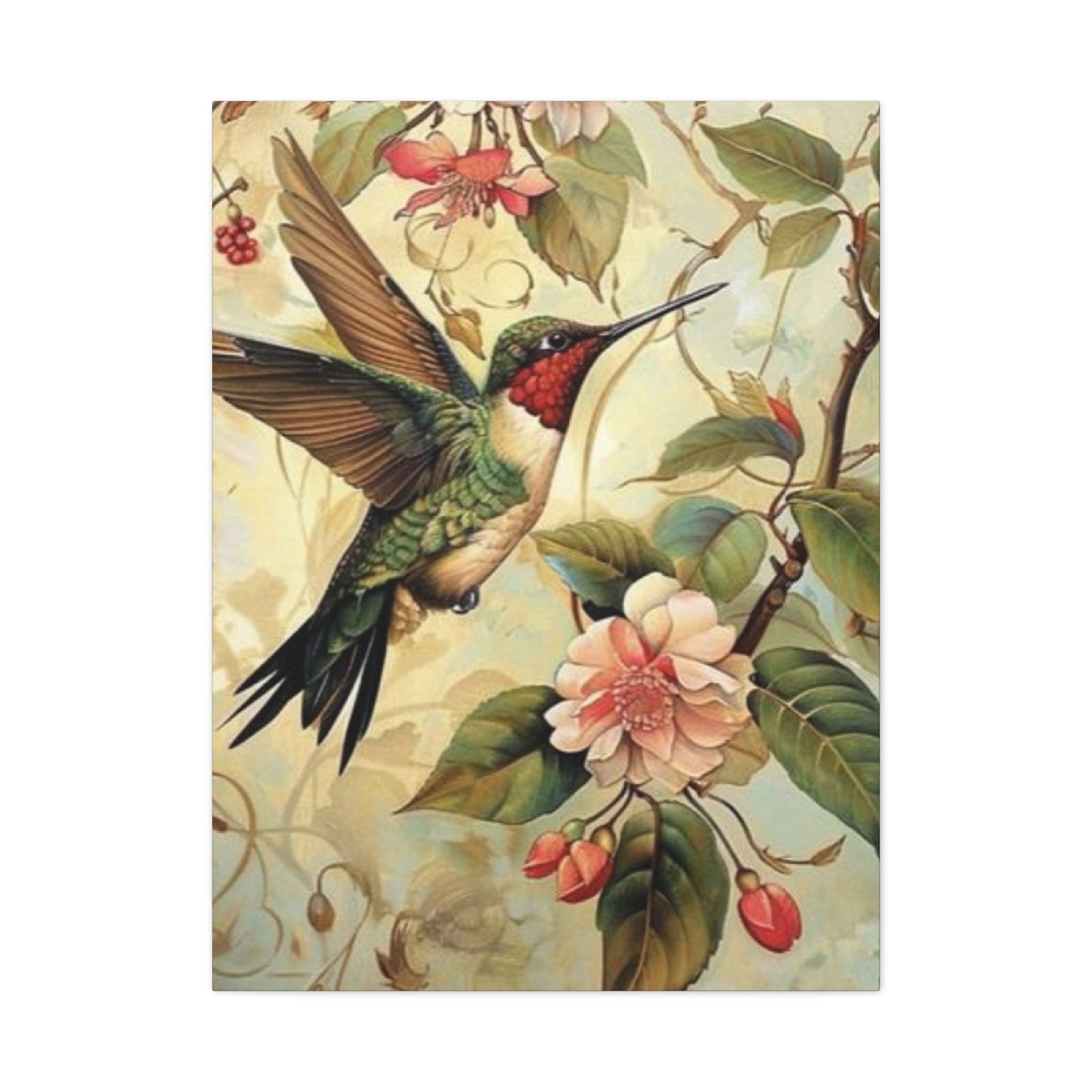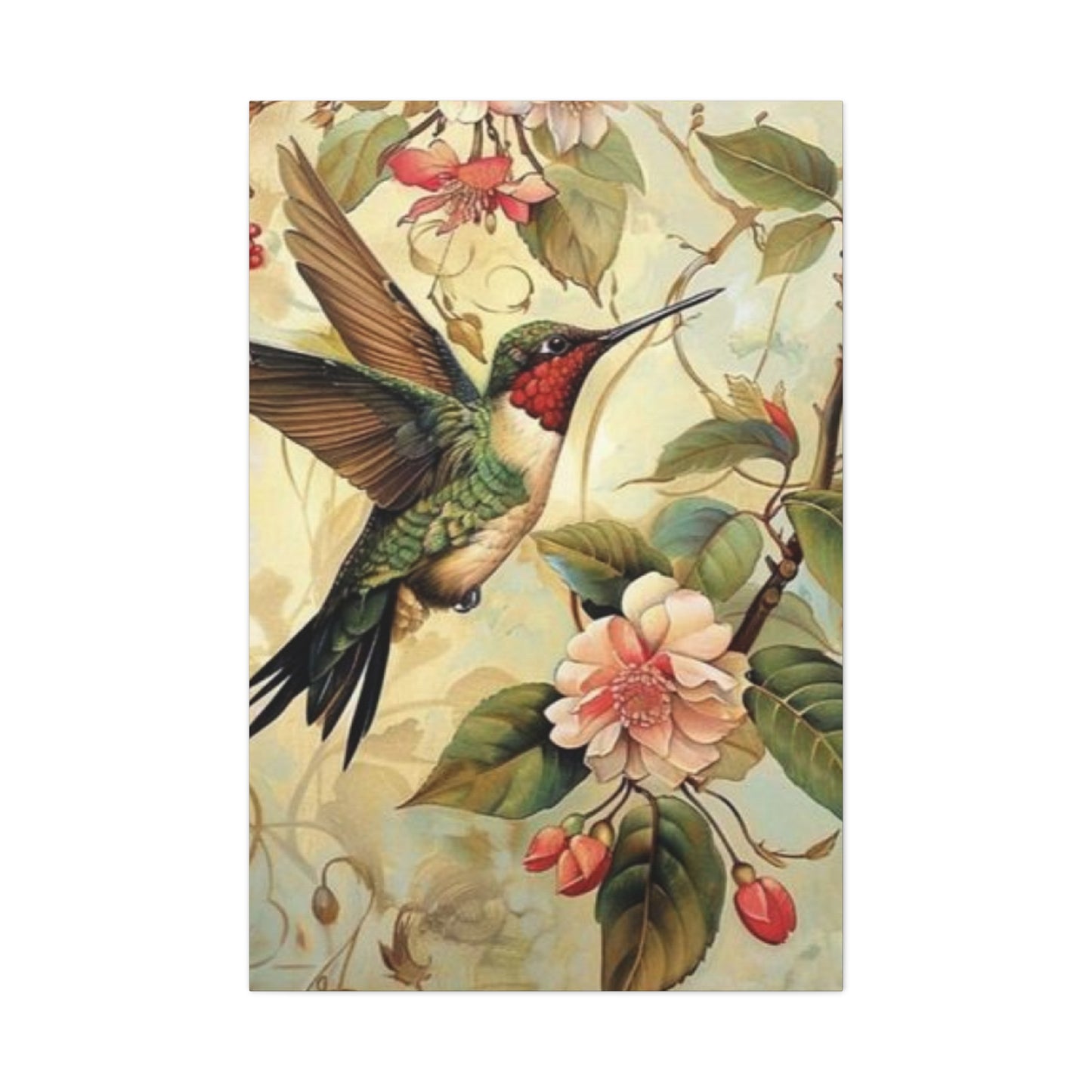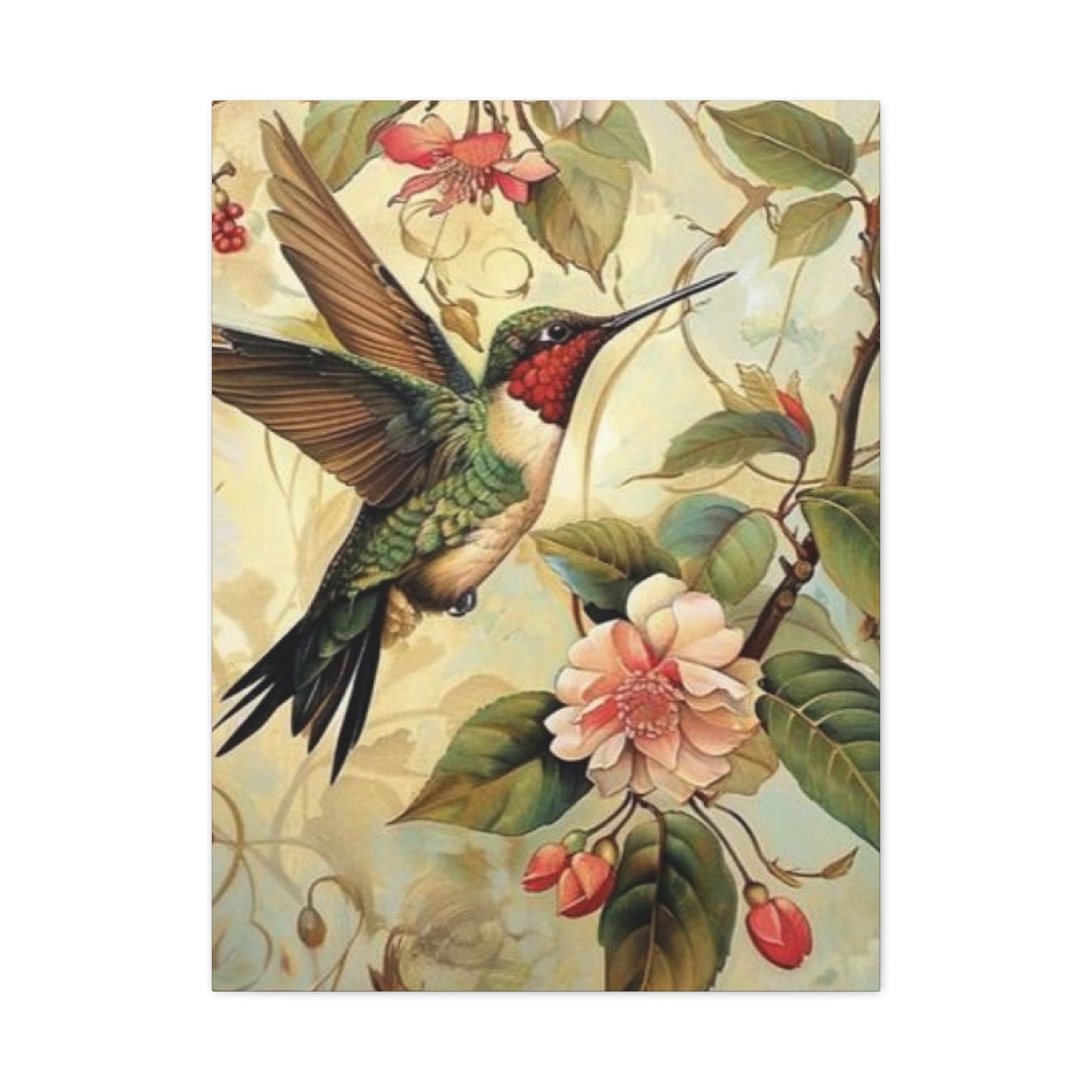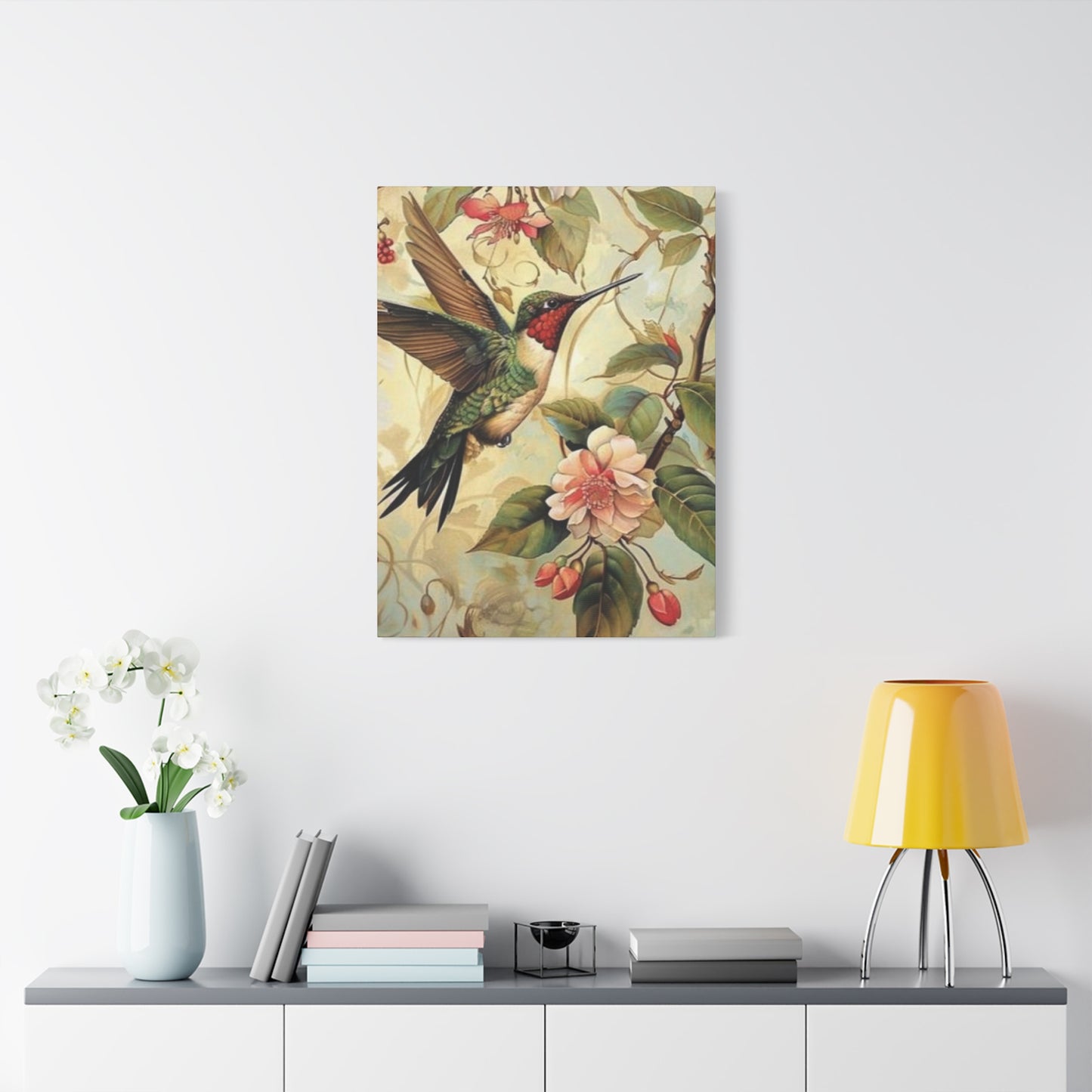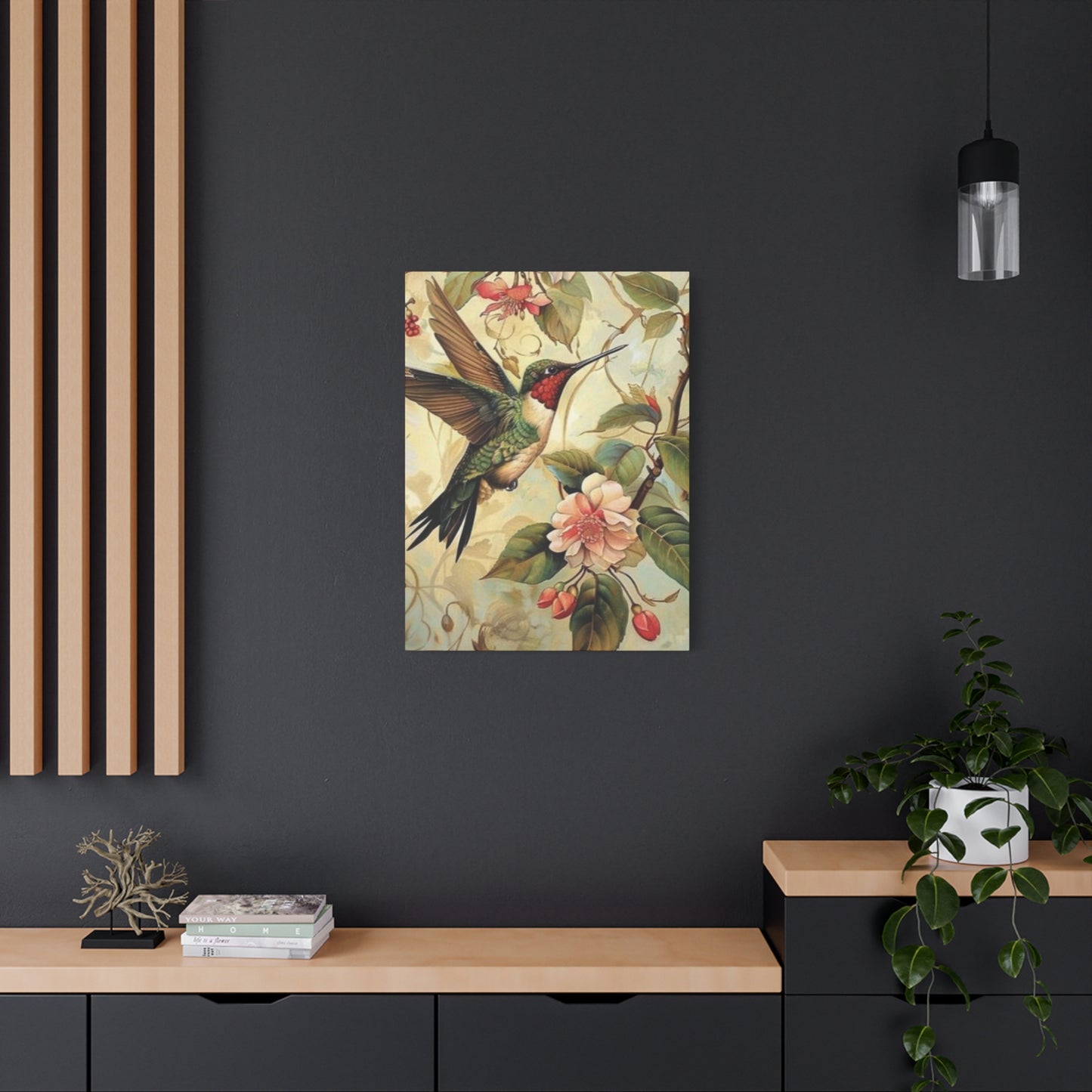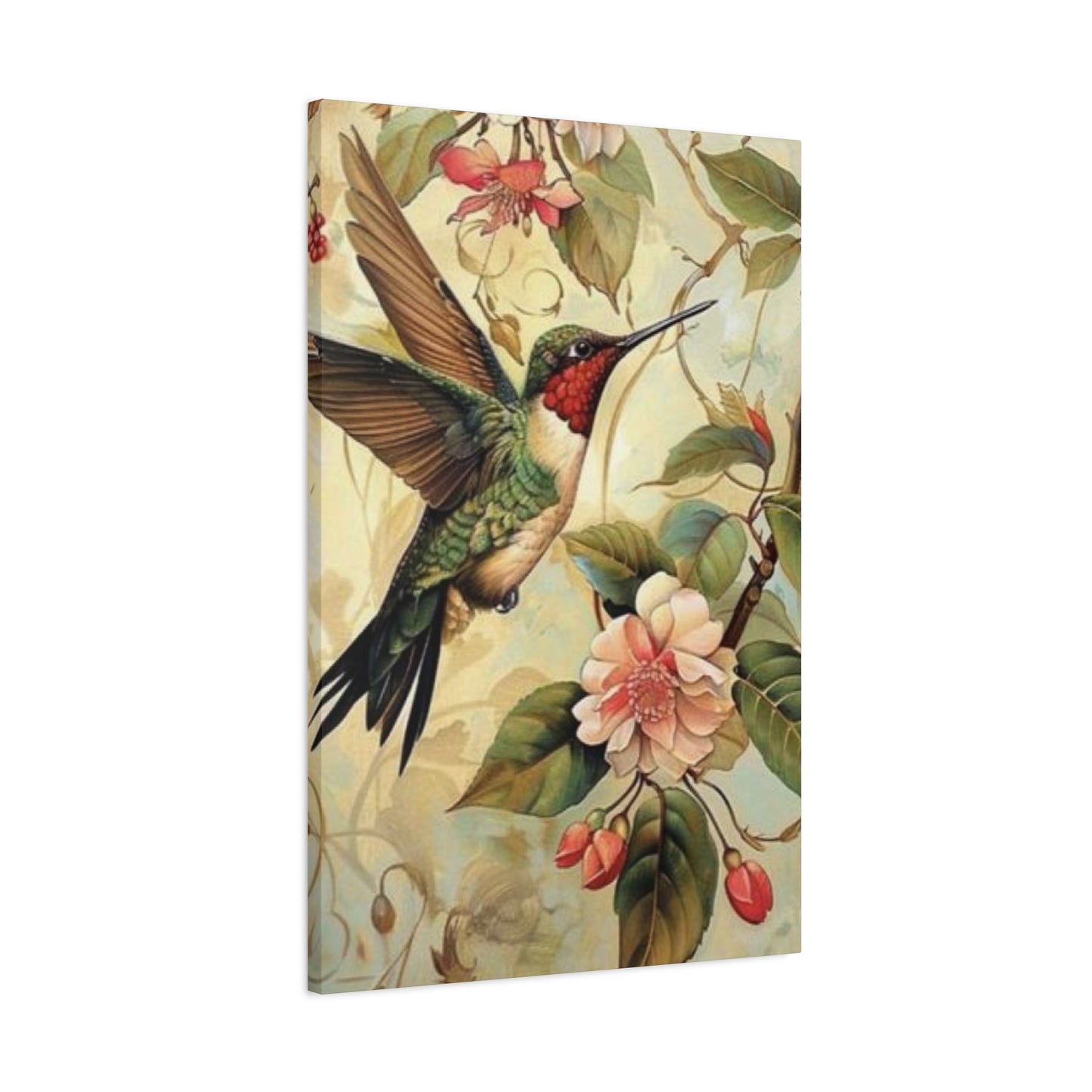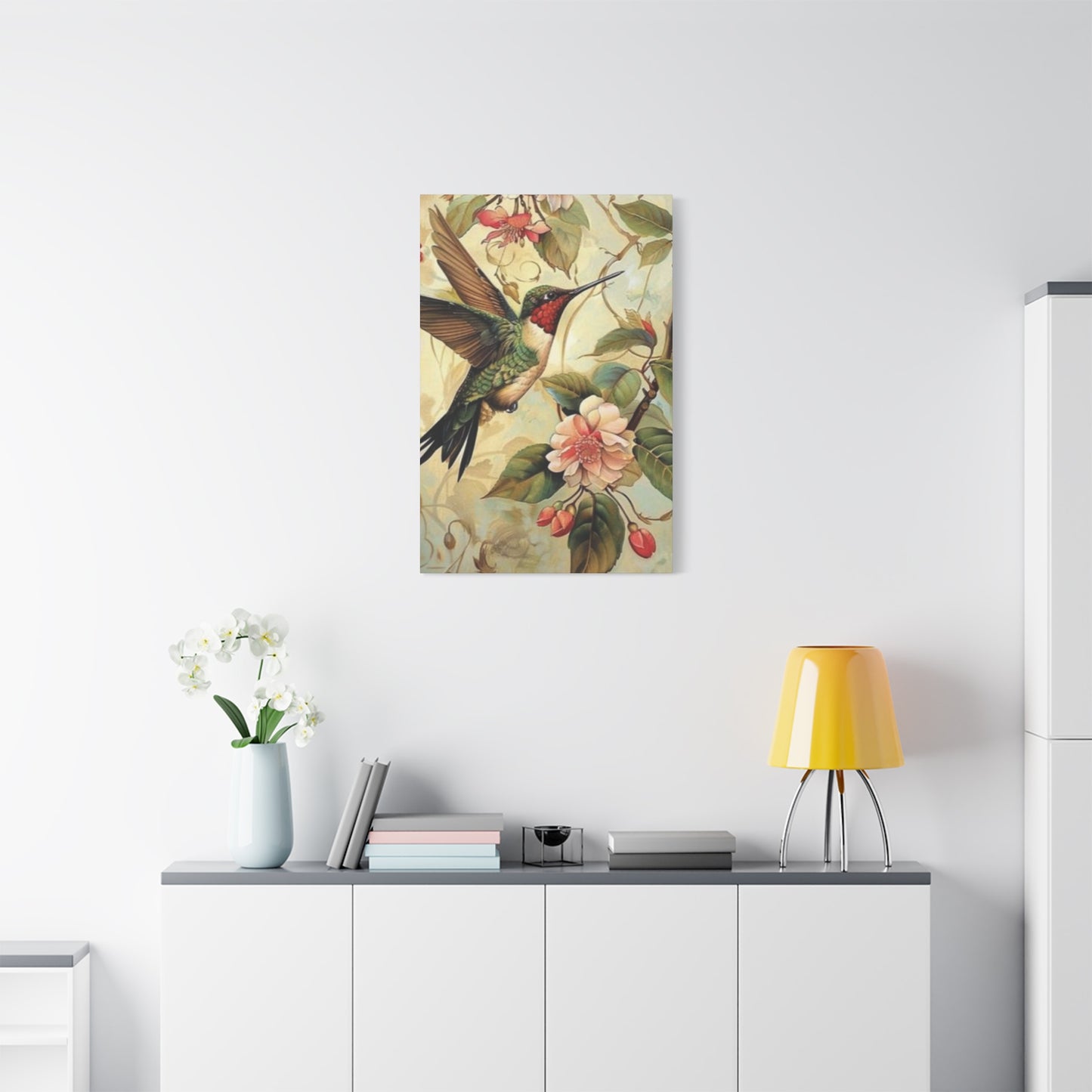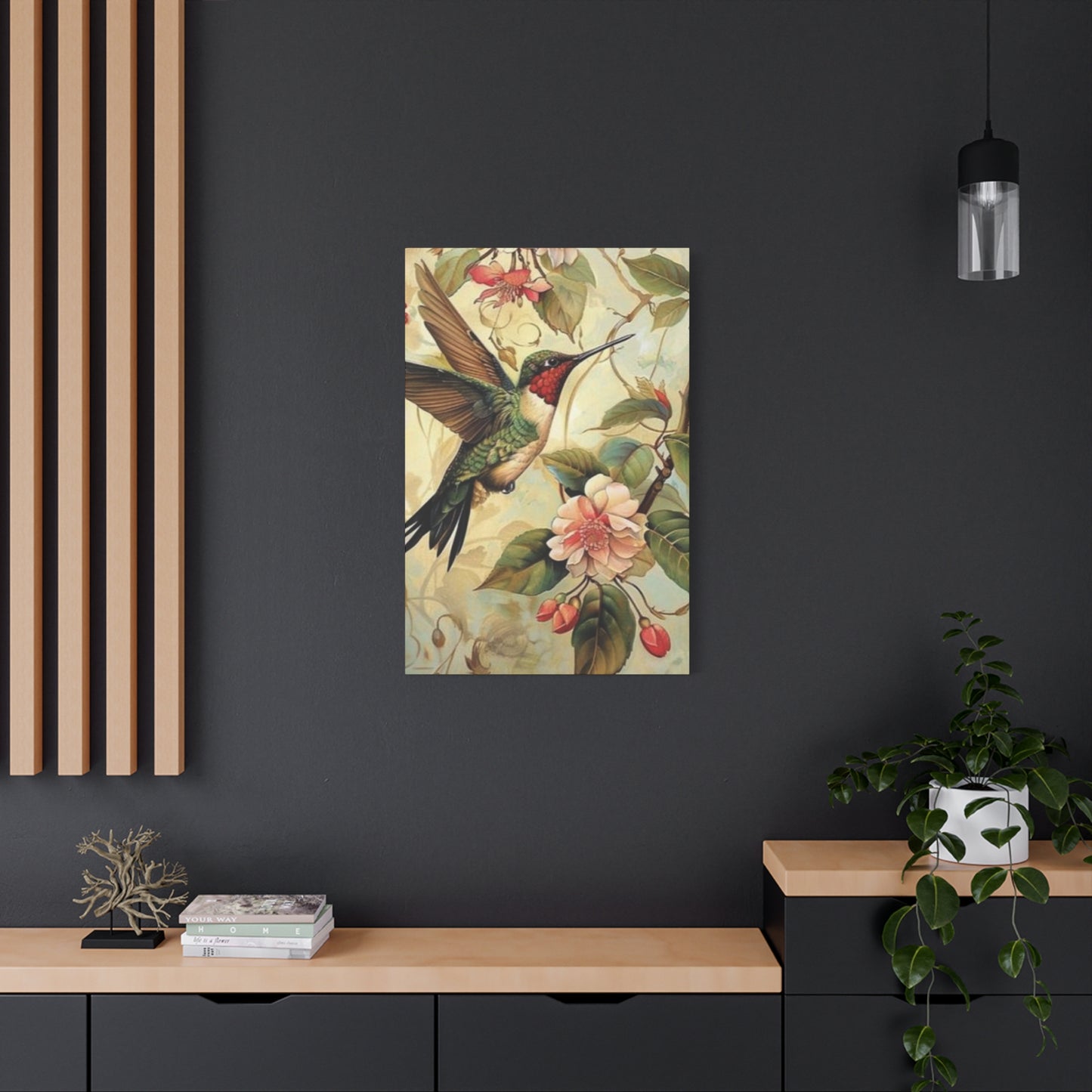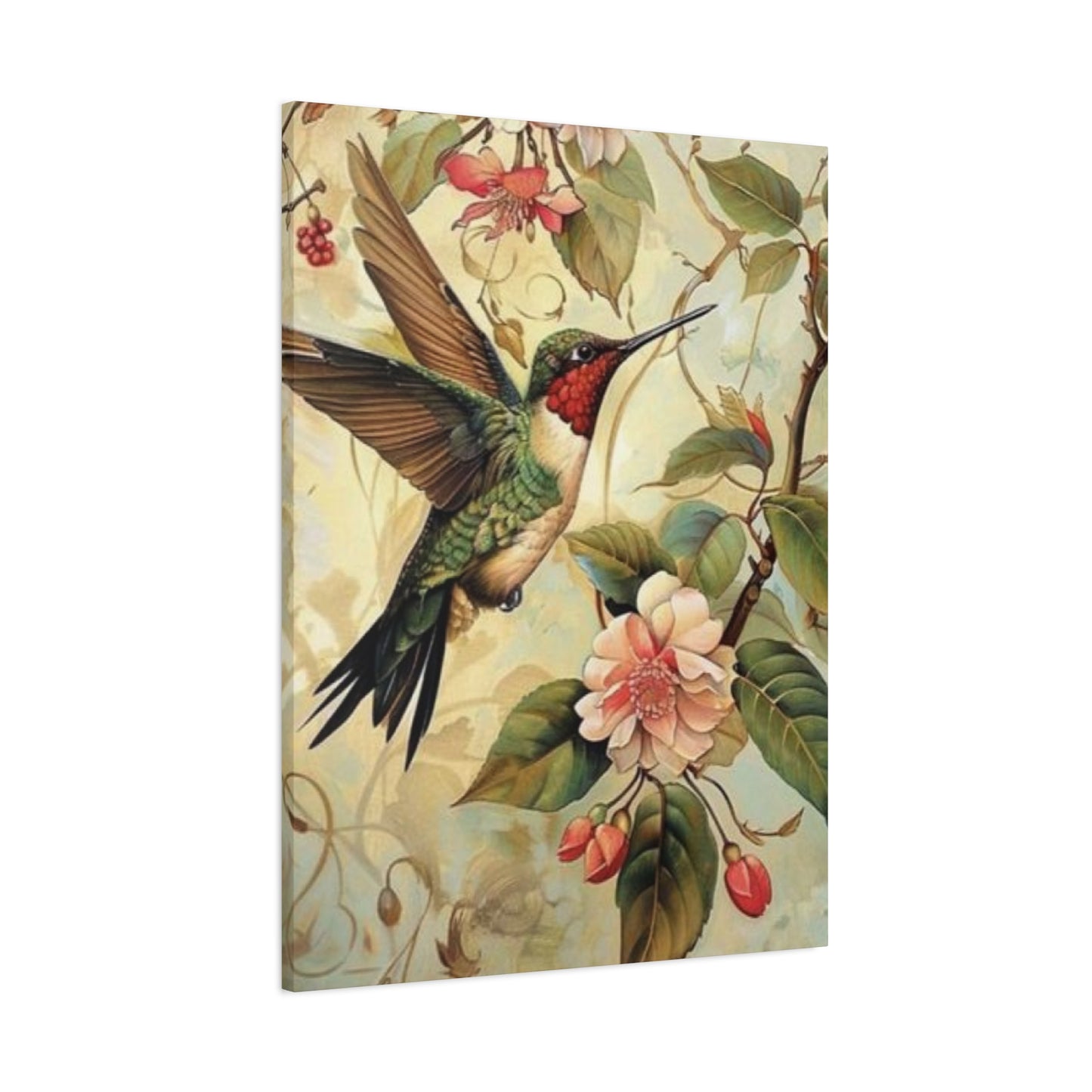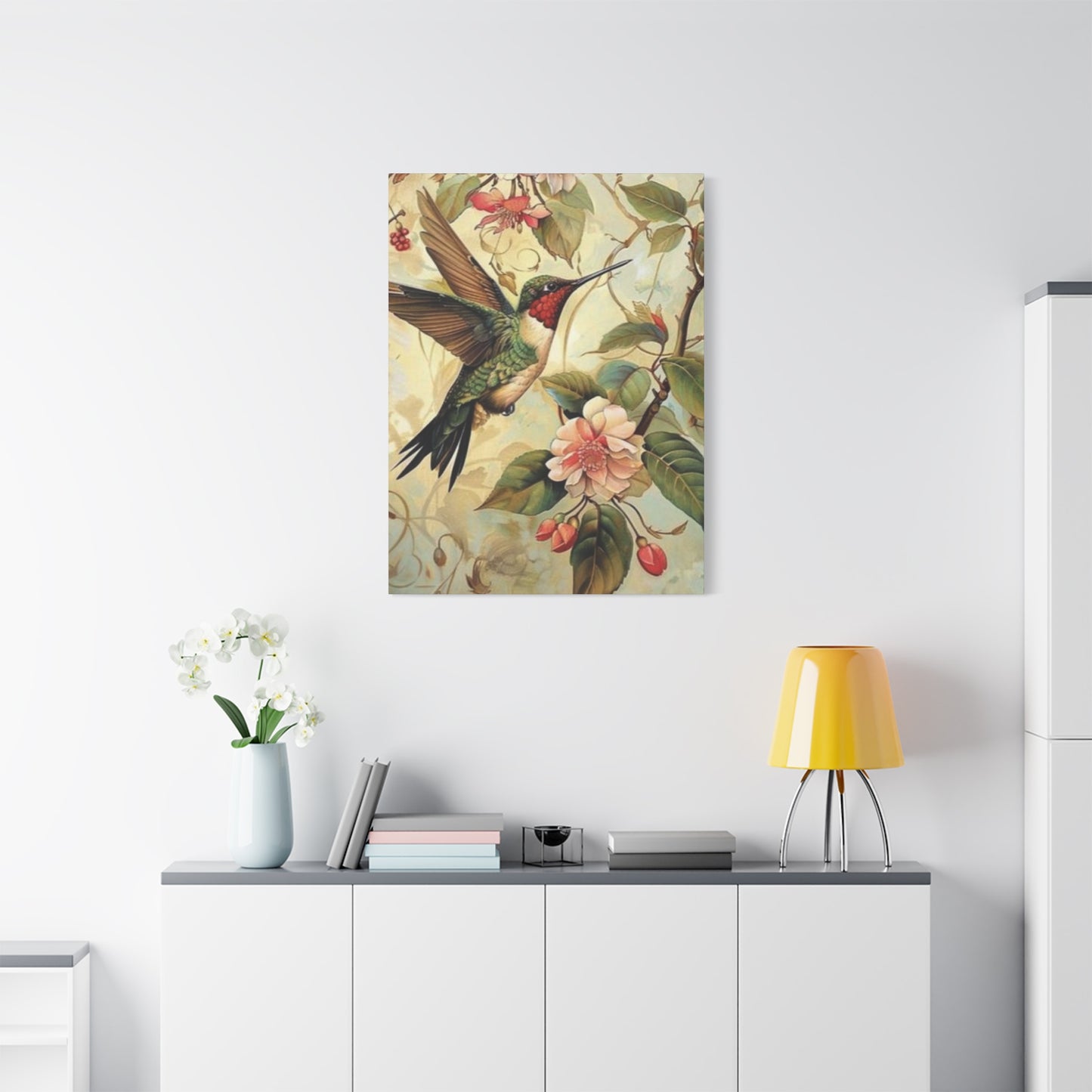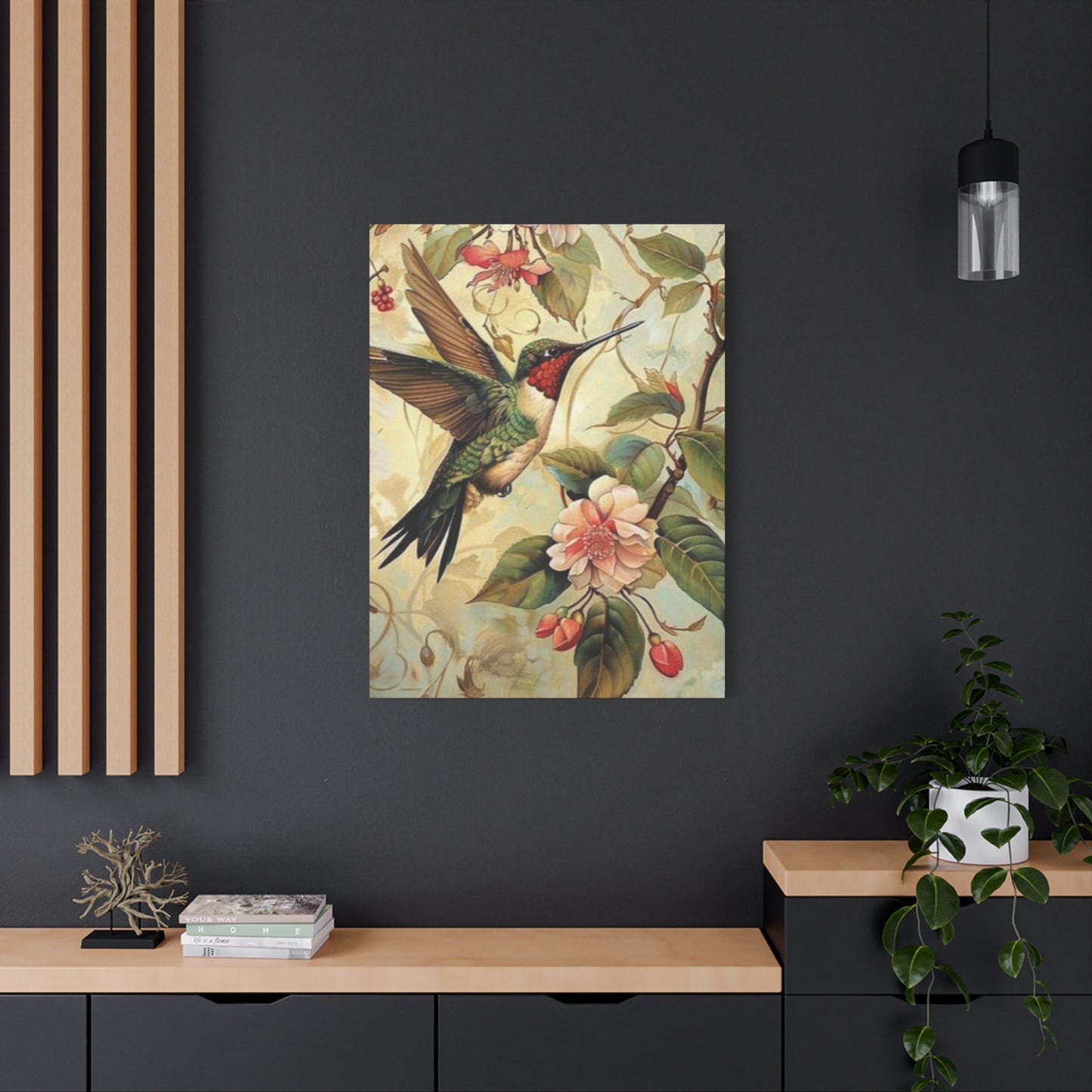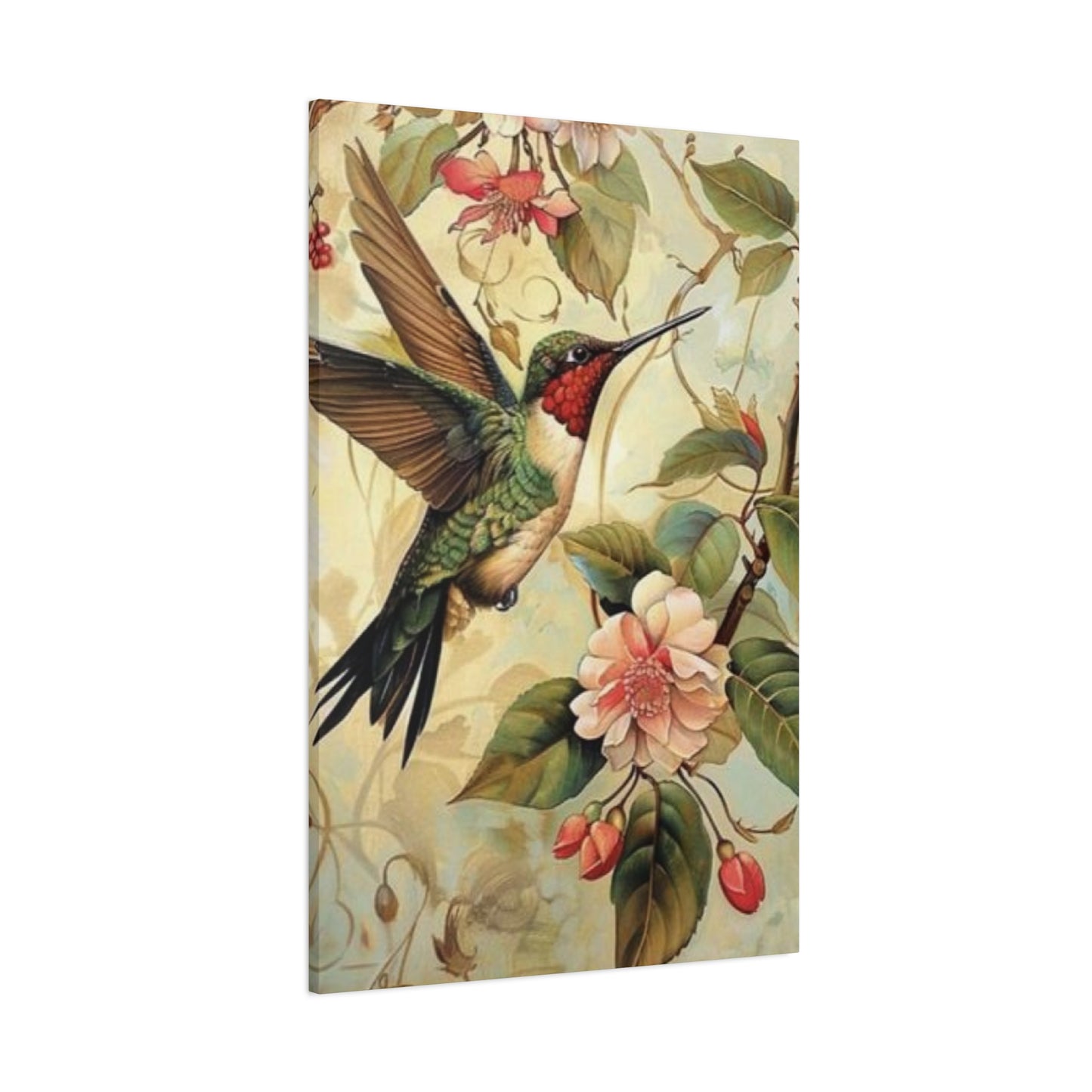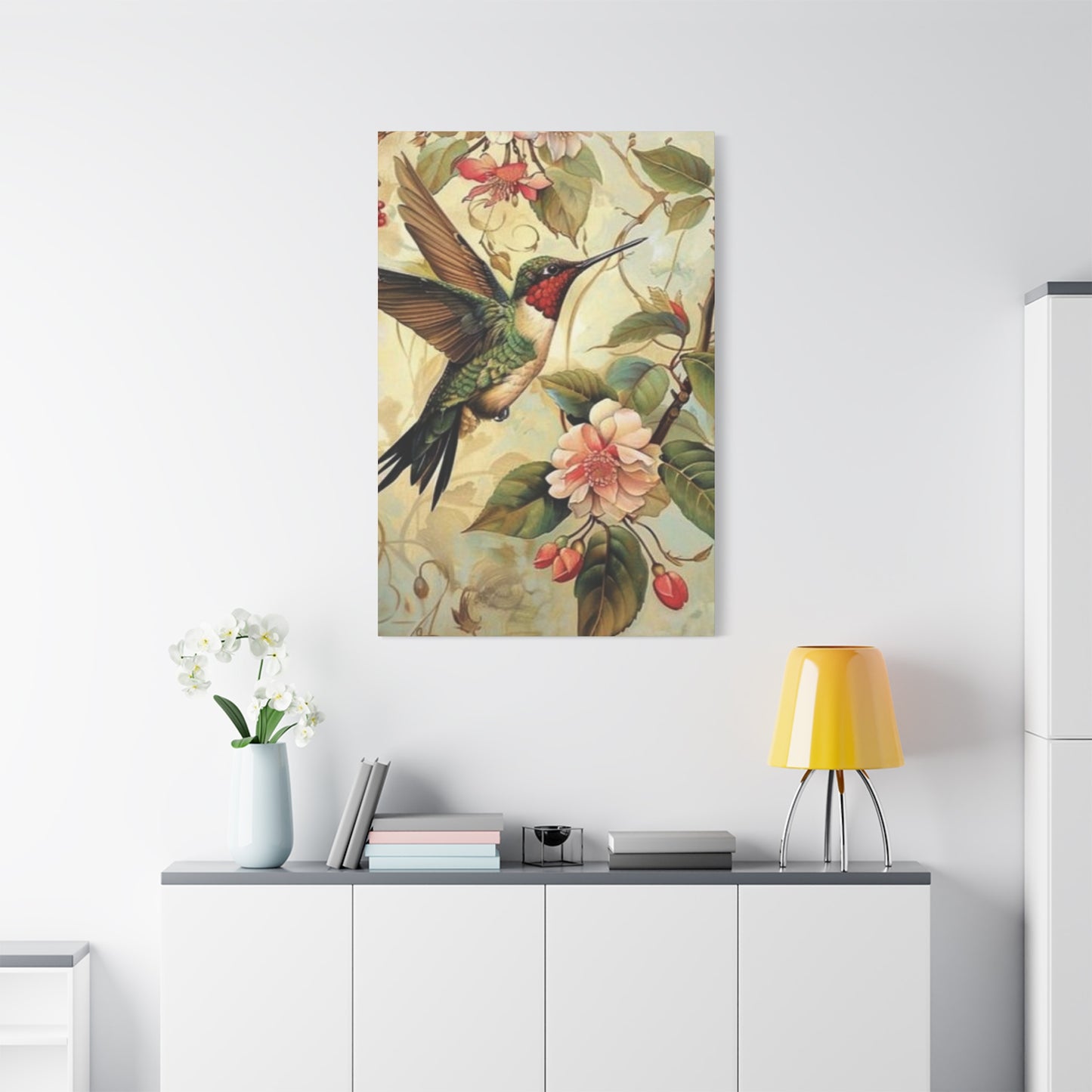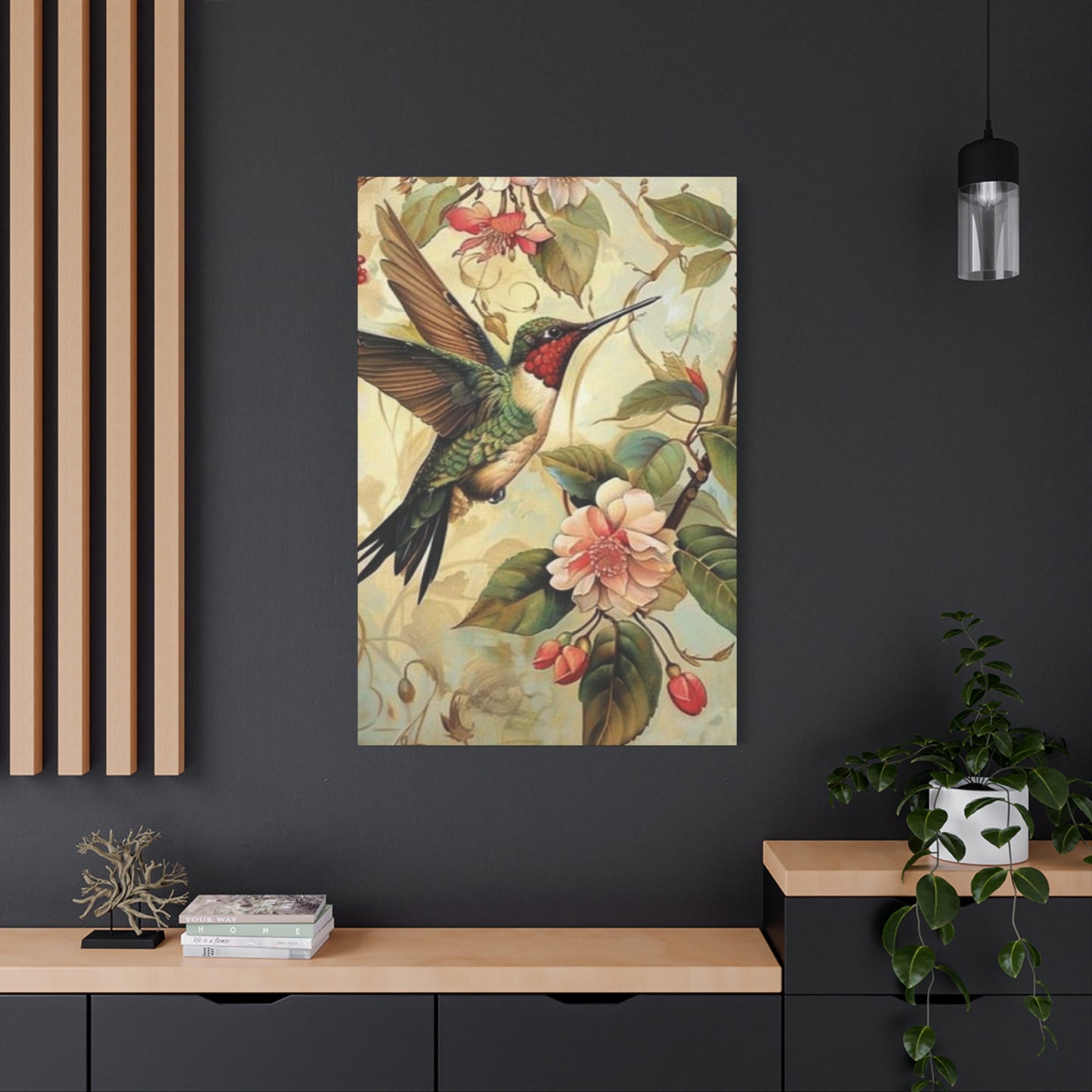Bringing Nature Indoors: Inspiring Hummingbird Wall Art for Your Home
Hummingbirds have long been celebrated as symbols of beauty, energy, and freedom. With their iridescent feathers, rapid wing movements, and delicate forms, they capture the imagination of poets, artists, and nature enthusiasts alike. Their vibrant colors and graceful flight make them one of the most enchanting subjects in both art and nature.
In the world of interior design, hummingbirds offer a unique opportunity to bring the serenity and vitality of the natural world indoors. Hummingbird painting wall art not only immortalizes the elegance of these tiny birds but also injects a lively and dynamic element into any space. Whether rendered in intricate realism or bold, abstract interpretations, hummingbird art creates a focal point that draws attention, sparks conversation, and evokes a deep appreciation for nature’s beauty.
Beyond their visual appeal, hummingbird paintings can transform the mood and atmosphere of a room. Their presence symbolizes joy, resilience, and freedom, reminding viewers of the small wonders of life and the beauty in fleeting moments. By incorporating hummingbird art into your home, you can merge aesthetic sophistication with emotional and psychological benefits, creating spaces that are both visually captivating and deeply inspiring.
From large statement pieces to subtle, delicate works, hummingbird wall art offers versatile styling options that can complement a wide range of interior themes—from minimalist modern spaces to eclectic, nature-inspired rooms. With their blend of color, movement, and symbolism, hummingbirds provide an ideal way to infuse interiors with life, energy, and the calming essence of the natural world.
The Allure of Hummingbird Wall Art
Hummingbirds are among the most captivating and mesmerizing creatures in the natural world. With their iridescent feathers reflecting a kaleidoscope of colors and their rapid, almost imperceptible wing movements, they appear to hover effortlessly in mid-air. This delicate combination of grace, speed, and vibrant color has inspired generations of artists, illustrators, and interior designers to capture their essence on canvas and other mediums, bringing the magic of these tiny birds into the home.
Realistic artworks often focus on meticulous details—the intricate patterns of feathers, the subtle curve of a hummingbird’s wings in motion, and the characteristic hovering or darting posture that gives the bird its signature charm. These paintings and illustrations can infuse a room with a sense of elegance and authenticity, creating the illusion that a hummingbird might flutter across the room at any moment. The precision and lifelike quality of realistic art not only celebrate the beauty of nature but also invite viewers to pause and appreciate the complexity of these small yet extraordinary creatures.
On the other hand, abstract interpretations of hummingbirds emphasize energy, emotion, and movement over strict realism. Artists employ bold brush strokes, layered textures, and vibrant color palettes to evoke the birds’ vitality and freedom. These pieces can energize a space, serving as dynamic focal points that command attention and inspire conversation. Abstract hummingbird art allows viewers to feel the motion, the lightness, and the whimsical nature of the birds, translating their essence into a visual language that resonates on a deeper, more emotional level.
The true charm of hummingbird wall art lies in its versatility. From delicate watercolors that bring subtle serenity to a bedroom to bold, textured mixed-media pieces that make a statement in a living room, hummingbird art can be adapted to suit any interior style. Whether your preference leans toward lifelike representations or expressive, abstract designs, these artworks have the power to transform a blank wall into a vibrant, lively scene inspired by the beauty of nature.
Ultimately, hummingbird wall art doesn’t just decorate a space—it breathes life, color, and motion into interiors, capturing the delicate balance of grace and energy that these enchanting birds embody. With each piece, homeowners can experience a small, daily reminder of the beauty, freedom, and joy that hummingbirds bring to the natural world, making them a timeless addition to any home décor.
Where to Display Hummingbird Art
One of the remarkable qualities of hummingbird wall art is its versatility. Its delicate beauty and vibrant energy allow it to complement a variety of interior spaces, whether you want to make a bold statement or add a subtle touch of nature-inspired elegance. Here’s a closer look at some ideal locations for displaying hummingbird paintings in your home:
Living Rooms
The living room is often the heart of the home, a space for gathering, relaxation, and entertaining guests. A large, colorful hummingbird painting can serve as the centerpiece of this room, drawing the eye and immediately creating a sense of movement and vitality. The dynamic forms and shimmering hues of the artwork can energize the space, adding life to neutral walls and soft furnishings. Pairing the painting with muted sofas, minimalist décor, or natural textures like wood and linen allows the artwork to take center stage, transforming your living room into a vibrant, inviting environment.
Bedrooms
Bedrooms are intimate spaces where comfort and tranquility are paramount. In this context, hummingbird paintings rendered in soft pastels or delicate watercolors can evoke serenity and calm. Their light, airy presence introduces a touch of nature without overwhelming the room, making them perfect companions for restful environments. Placing a subtle hummingbird piece above a bed or on a side wall can create a peaceful ambiance, inspiring relaxation while connecting the space with the beauty and freedom of the natural world. Even smaller, understated hummingbird prints can make a meaningful decorative impact without dominating the room.
Home Offices
For workspaces and home offices, hummingbird art offers more than just aesthetic appeal—it can be a source of motivation and inspiration. The energy and vitality conveyed in a hummingbird’s movement can encourage creativity, productivity, and a sense of focus. Bright, uplifting colors or abstract interpretations of hummingbirds can help energize the room, providing visual stimulation that sparks ideas and maintains engagement throughout the day. Placing hummingbird art above a desk, near a bookshelf, or along a wall frequently viewed during work can subtly boost both mood and productivity, combining functionality with beauty.
Hallways and Entryways
Hallways and entryways are transitional spaces that often go overlooked in interior design. Adding a hummingbird painting to these areas offers a warm and inviting welcome to anyone entering your home. Its charm and elegance can instantly brighten an otherwise narrow or unadorned space, turning it into a moment of visual delight. Whether displayed as a single striking piece or as part of a small gallery, hummingbird art can set the tone for the rest of the home, reflecting the homeowner’s love for nature, artistry, and thoughtful design.
Other Creative Spaces
Beyond traditional rooms, hummingbird art can also enhance creative and unconventional areas such as sunrooms, reading nooks, or even bathrooms. In a sunroom, for example, a vibrant hummingbird painting can harmonize with the natural light and surrounding greenery, creating a seamless blend of indoor and outdoor beauty. In cozy reading corners, smaller hummingbird artworks can provide inspiration and a sense of calm. Even in bathrooms, watercolor or abstract hummingbird pieces can add a refreshing touch of color and movement, transforming everyday spaces into serene, uplifting environments.
Pairing Hummingbird Art with Décor
One of the most appealing qualities of hummingbird wall art is its versatility. These artworks can seamlessly complement a wide range of interior styles, from minimalist modern spaces to eclectic, nature-inspired homes. Choosing the right pairing can enhance the visual impact of the art while harmonizing with the overall design of a room.
Botanical and Nature Themes
Hummingbird paintings naturally harmonize with botanical or wildlife-themed décor. Pairing these artworks with floral prints, leafy patterns, or strategically placed potted plants creates a cohesive, nature-inspired environment. This combination evokes the feeling of bringing a garden indoors, connecting interior spaces with the natural world. In sunrooms, reading nooks, or living areas filled with greenery, hummingbird art enhances the sense of serenity and continuity with nature, creating a refreshing, uplifting atmosphere.
Minimalist Interiors
In minimalist homes, a single hummingbird painting can serve as a bold focal point. The simplicity of neutral walls, clean lines, and uncluttered furniture allows the artwork to stand out, drawing attention to intricate details or vibrant colors. Minimalist interiors benefit from this striking contrast, as the painting adds visual interest and energy without overwhelming the clean, understated aesthetic. A well-placed hummingbird artwork in a minimalist setting can convey elegance, sophistication, and subtle dynamism all at once.
Eclectic or Boho Spaces
Hummingbird art is equally effective in eclectic or bohemian interiors. By mixing multiple hummingbird pieces with other wildlife, abstract, or colorful artworks, homeowners can create a lively gallery wall that exudes personality and charm. Layering textures, patterns, and varying sizes of art pieces adds depth and visual intrigue, reflecting the playful energy and vibrancy of hummingbirds themselves. In such spaces, hummingbird art contributes to the rich, eclectic ambiance, making the walls feel dynamic and expressive.
Choosing the Right Medium
The medium of a hummingbird painting significantly influences the style, mood, and overall impact of the artwork. Selecting the right medium ensures that the piece complements the room’s décor while achieving the desired visual effect.
Watercolor Paintings
Watercolor hummingbird art is perfect for soft, delicate interpretations. The fluidity of watercolors allows artists to capture the subtle shimmer of feathers and the light, airy quality of flight. These pieces work beautifully in spaces designed for calm and relaxation, such as bedrooms, nurseries, or cozy reading nooks. The gentle tones and soft edges of watercolor art lend a serene and soothing atmosphere to any room.
Acrylic and Oil Paintings
Acrylic and oil paintings provide richer colors, stronger textures, and greater depth. These mediums allow for bold, expressive brushstrokes that convey motion and energy, making them ideal as focal points in living rooms, offices, or larger spaces. The intensity and vibrancy of acrylic or oil hummingbird art can energize a room, making a dramatic design statement while adding warmth and sophistication.
Mixed Media
Mixed media hummingbird art incorporates multiple techniques and materials, such as paint, ink, and collage, to create layered, textured artworks. This approach offers a modern, innovative feel, providing both visual and tactile interest. Mixed media pieces are particularly well-suited for contemporary or eclectic interiors, where they can act as statement pieces that draw attention, spark conversation, and infuse a room with creativity.
Prints and Posters
For those seeking affordable and flexible options, high-quality prints or posters are an excellent choice. They allow homeowners to enjoy hummingbird art without the higher cost associated with original paintings. Prints can be easily swapped, rotated, or rearranged to refresh the décor according to seasonal trends or evolving interior styles. This versatility makes them ideal for temporary gallery walls, dorm rooms, or rented spaces where permanent installation may not be possible.
Benefits of Bringing Nature Indoors
Incorporating hummingbird wall art into your home provides more than aesthetic value. Nature-inspired art has been shown to improve mood, reduce stress, and foster a sense of connection to the outdoors. Hummingbirds, in particular, symbolize joy, resilience, and freedom. Surrounding yourself with these representations can inspire positivity and mindfulness in your everyday life.
The tiny hummingbird carries immense symbolic weight across various cultures and artistic traditions, making it one of the most powerful subjects in contemporary wall art. These remarkable creatures represent joy, resilience, and the ability to find sweetness in life's challenges. Artists have long been fascinated by the hummingbird's unique characteristics, translating their ethereal beauty into canvas compositions that speak to viewers on multiple levels.
Throughout art history, hummingbirds have been associated with love, healing, and spiritual guidance. Native American cultures view these birds as messengers between worlds, capable of bringing good fortune and positive energy to any space they inhabit. This spiritual significance translates beautifully into modern interior design, where hummingbird artwork serves as both decorative elements and meaningful focal points that inspire daily contemplation.
The symbolic nature of hummingbirds extends beyond cultural interpretations to encompass universal themes of perseverance and grace. Their ability to hover in place while moving their wings at incredible speeds mirrors the human capacity to find stillness amid life's chaos. Artists capture this paradox through various techniques, creating pieces that simultaneously convey motion and tranquility.
Contemporary artists often incorporate hummingbird imagery to represent freedom and independence. The bird's solitary nature and incredible migration abilities inspire artwork that celebrates personal growth and self-discovery. These themes resonate particularly well in residential spaces, where homeowners seek art that reflects their aspirations and values.
The color symbolism associated with hummingbirds adds another layer of meaning to artistic representations. Green hummingbirds often symbolize growth and renewal, while blue specimens represent peace and serenity. Red hummingbirds are associated with passion and energy, making them ideal subjects for artwork intended to invigorate spaces. Artists skillfully manipulate these color associations to create pieces that align with specific emotional intentions.
In modern therapeutic art practices, hummingbird imagery is frequently used to promote healing and positive thinking. The bird's association with overcoming obstacles and finding joy in small moments makes it a powerful subject for creating uplifting environments. Healthcare facilities, meditation spaces, and wellness centers often feature hummingbird artwork to enhance their healing atmospheres.
The delicate nature of hummingbirds also makes them symbols of fragility and the preciousness of life. Artists use this symbolism to create thought-provoking pieces that encourage viewers to appreciate beauty in fleeting moments. This philosophical depth adds intellectual appeal to hummingbird artwork, making it suitable for spaces where contemplation and reflection are valued.
Selecting Perfect Hummingbird Artwork for Main Living Areas
The living room serves as the heart of most homes, making it crucial to select hummingbird artwork that complements both the space's function and aesthetic. When choosing pieces for this central gathering area, consider the room's existing color palette, lighting conditions, and overall design style. Hummingbird artwork should enhance the space's welcoming atmosphere while serving as engaging conversation pieces for guests.
Size considerations play a vital role in living room art selection. Large statement pieces work exceptionally well above sofas or mantels, where they can command attention without overwhelming the space. Multiple smaller hummingbird pieces can be grouped together to create gallery walls that add visual interest and depth. The key is maintaining proper proportions between artwork and furniture to achieve balanced compositions.
Color coordination between hummingbird artwork and existing decor elements creates cohesive design schemes. If your living room features neutral tones, vibrant hummingbird pieces can inject necessary color and energy. Conversely, rooms with bold color schemes benefit from more subdued hummingbird artwork that provides visual rest areas. Consider how different lighting conditions throughout the day will affect the artwork's appearance and impact.
The style of hummingbird artwork should align with your living room's overall design aesthetic. Contemporary spaces benefit from abstract or stylized hummingbird representations, while traditional rooms might favor realistic or classical interpretations. Mixed-media pieces incorporating natural elements like pressed flowers or metallic accents can bridge different design styles effectively.
Placement considerations extend beyond simple wall mounting to include lighting, viewing angles, and traffic patterns. Hummingbird artwork positioned at eye level creates intimate viewing experiences, while higher placements can make ceilings appear taller and spaces more expansive. Consider how natural light from windows will interact with the artwork throughout different times of day and seasons.
The emotional impact of hummingbird artwork in living spaces cannot be understated. These pieces should evoke feelings of joy, wonder, and tranquility that align with the room's primary function as a relaxation and social space. Artwork featuring hummingbirds in flight can add dynamic energy, while pieces showing them feeding or resting create more peaceful atmospheres.
Seasonal considerations can influence hummingbird artwork selection for living rooms. Pieces featuring spring flowers and bright colors work well year-round, while those incorporating winter elements might feel too seasonal for permanent display. Choose artwork that maintains its appeal across different seasons and decorating changes.
Budget considerations need not limit artistic choices when selecting living room hummingbird artwork. High-quality prints can provide the same visual impact as original paintings at more accessible price points. Limited edition pieces offer exclusivity without original artwork investment levels. Consider mixing different price points to create layered, interesting displays that evolve over time.
Creating Impact with Oversized Hummingbird Canvas Presentations
Large format hummingbird canvases serve as dramatic focal points that can transform entire rooms through their commanding presence and intricate details. These substantial pieces require careful planning and consideration to ensure they enhance rather than overwhelm their intended spaces. The impact of oversized hummingbird artwork extends far beyond mere decoration, creating immersive experiences that draw viewers into the natural world's beauty.
When selecting large format hummingbird canvases, consider the artwork's resolution and printing quality. High-resolution images maintain crisp details even when enlarged significantly, ensuring that every feather texture and color gradation remains visually stunning. Professional printing on museum-quality canvas materials provides longevity and color stability that justifies the investment in substantial pieces.
Composition becomes increasingly important in large format works, as viewers can examine details that might be lost in smaller pieces. Artists creating oversized hummingbird canvases often incorporate multiple birds, elaborate floral backgrounds, or environmental contexts that provide visual interest across the entire surface area. These complex compositions reward extended viewing and discovery of new details over time.
Color impact intensifies with larger canvas sizes, making color selection crucial for achieving desired atmospheric effects. Vibrant, saturated hues can energize large spaces, while muted, sophisticated palettes create elegant, refined atmospheres. The psychological impact of color becomes more pronounced when covering significant wall areas, influencing room ambiance and occupant moods.
Installation considerations for large format hummingbird canvases require professional planning to ensure proper support and positioning. Heavy pieces need appropriate wall anchoring systems, while proper lighting becomes essential for showcasing the artwork's details and colors effectively. Consider how the piece will interact with room architecture, furniture placement, and traffic flow patterns.
Large format pieces offer unique opportunities for creating themed room designs centered around hummingbird imagery. These substantial artworks can inspire entire decorating schemes, from color selections to furniture choices and accessory coordination. The investment in a significant piece justifies building room designs that showcase and complement the artwork's impact.
The viewing experience of large format hummingbird canvases differs significantly from smaller works, allowing for both distant appreciation of overall composition and close examination of intricate details. This dual viewing capability makes these pieces particularly suitable for rooms where people spend extended periods, such as living rooms, bedrooms, or office spaces.
Maintenance considerations become more complex with larger canvases, requiring appropriate cleaning techniques and environmental protection. Proper humidity control, UV protection, and dust management help preserve the artwork's appearance and value over time. Consider these ongoing requirements when planning large format art purchases and installations.
Vibrant Color Palettes in Hummingbird Painting Collections
Bright and colorful hummingbird paintings capture the essence of these remarkable creatures while infusing spaces with energy and vitality. The natural iridescence of hummingbird feathers provides artists with inspiration for creating spectacular color combinations that range from subtle rainbow effects to bold, contrasting hues. These vibrant pieces serve as powerful mood enhancers, capable of transforming neutral spaces into dynamic, engaging environments.
The science behind hummingbird coloration offers fascinating insights that artists translate into their work. Structural coloration, which creates the birds' famous iridescent appearance, results from microscopic structures that reflect and refract light rather than pigmentation alone. Artists recreate these effects through various techniques, including metallic paints, interference colors, and layered glazing methods that shift and change under different lighting conditions.
Color psychology plays a crucial role in selecting bright hummingbird paintings for specific spaces and purposes. Red and orange hues stimulate energy and enthusiasm, making them ideal for social areas or spaces where activity and engagement are desired. Green tones promote harmony and balance, working well in bedrooms or meditation spaces. Blue and purple shades encourage calm contemplation and creative thinking, suitable for offices or study areas.
The interaction between bright hummingbird paintings and interior lighting creates dynamic visual experiences throughout the day. Natural daylight reveals the full spectrum of colors and details, while artificial lighting can emphasize different aspects of the artwork. LED lighting systems with adjustable color temperatures can be used to optimize artwork appearance for different times and activities.
Seasonal color preferences can influence the selection and rotation of bright hummingbird paintings. Spring-inspired pieces featuring fresh greens and pastel flowers create renewal atmospheres, while summer palettes of intense blues and vibrant reds energize spaces during longer days. Autumn-toned pieces with warm oranges and deep purples provide cozy comfort during cooler months.
The cultural significance of specific colors in hummingbird artwork adds depth to decorative choices. Many cultures associate particular colors with specific meanings and emotions, making color selection an opportunity to incorporate personal or cultural values into interior design. Understanding these associations can guide artwork selection for maximum personal resonance and meaning.
Technical considerations for displaying bright, colorful hummingbird paintings include UV protection to prevent fading and color shift over time. Museum-quality glass or acrylic glazing provides protection while maintaining color accuracy and visual clarity. Proper framing materials that won't react with or contaminate the artwork ensure long-term preservation of vibrant colors.
The psychological benefits of bright, colorful artwork in living spaces have been extensively documented by environmental psychology researchers. Vibrant hummingbird paintings can reduce stress, improve mood, and increase creativity and productivity. These benefits make colorful pieces particularly valuable in homes where occupants spend significant time or in spaces dedicated to relaxation and rejuvenation.
Sophisticated Monochrome Approaches to Hummingbird Wall Art
Monochrome hummingbird wall art offers elegant sophistication that complements minimalist design aesthetics while maintaining the symbolic power and natural beauty of these remarkable creatures. Black and white interpretations focus attention on form, movement, and composition rather than color, creating timeless pieces that integrate seamlessly with various decorating styles and color schemes.
The artistic challenge of creating compelling monochrome hummingbird artwork lies in conveying the birds' essential characteristics without relying on their famous iridescent coloration. Artists employ various techniques including detailed shading, textural contrasts, and strategic highlighting to capture the essence of hummingbird beauty in grayscale presentations. These technical approaches often reveal artistic skill levels more clearly than color work.
Contrast becomes the primary tool for creating visual interest in monochrome hummingbird pieces. High contrast compositions featuring stark blacks against pure whites create dramatic, modern appearances, while subtle gradations of gray provide softer, more contemplative effects. The choice between high and low contrast approaches depends on intended placement and desired emotional impact.
The versatility of monochrome hummingbird artwork makes it particularly valuable for interior designers and homeowners who prefer flexible decorating options. These pieces complement any color scheme without competing for visual attention, allowing room colors to change through accessories and textiles while maintaining consistent artistic elements. This adaptability represents significant long-term decorating value.
Photography-based monochrome hummingbird art captures incredible detail and realism that painted interpretations cannot match. High-speed photography techniques freeze hummingbird motion in ways invisible to human observation, revealing wing positions, feather arrangements, and expressions that create compelling artistic subjects. These realistic interpretations appeal to nature enthusiasts and those who appreciate technical photographic skill.
Abstract monochrome approaches to hummingbird art focus on essential forms and movements rather than realistic representation. These interpretations distill the hummingbird experience to basic elements of flight, grace, and energy, creating pieces that suggest rather than depict their subjects. Abstract monochrome work often appeals to contemporary art collectors and those who prefer conceptual rather than representational artwork.
The historical precedent for monochrome nature art provides cultural context for contemporary hummingbird pieces. Traditional Chinese ink paintings, Japanese woodblock prints, and European etching traditions all demonstrate the power of monochrome artwork to convey natural beauty and spiritual meaning. Modern monochrome hummingbird art continues these traditions while incorporating contemporary artistic innovations.
Matting and framing considerations for monochrome hummingbird artwork require careful attention to complementary tones and materials. White matting enhances contrast and creates clean, modern presentations, while darker mats provide sophisticated, gallery-like appearances. Frame selections should complement rather than compete with the artwork's monochromatic palette, often favoring simple, elegant designs in metallic or natural wood finishes.
Depicting Hummingbird Flight Dynamics
Capturing the essence of hummingbird motion presents unique challenges that have inspired artists to develop innovative techniques for conveying speed, grace, and the apparent defiance of gravity that characterizes these remarkable creatures. The complex mechanics of hummingbird flight, including their ability to hover, fly backwards, and change direction instantaneously, require sophisticated artistic approaches to translate three-dimensional movement into static two-dimensional representations.
High-speed photography has revolutionized the understanding of hummingbird flight mechanics, providing artists with reference materials that reveal wing positions and body postures invisible to casual observation. These photographic studies show wing shapes during different phases of flight cycles, allowing artists to choose specific moments that best convey desired movement sensations. The freeze-frame effect of photography captures split-second positions that suggest ongoing motion through implied continuation.
Blurred motion techniques simulate the visual experience of observing hummingbirds in natural settings, where rapid wing movement creates soft, ethereal effects around the birds' bodies. Artists achieve these effects through various methods including soft brushwork, airbrushing, and digital manipulation techniques that suggest movement while maintaining focal clarity on essential bird features like heads and bodies.
Multiple exposure effects, adapted from photographic techniques, create artistic representations showing several positions of the same bird during flight sequences. These compositions suggest temporal progression and movement patterns while maintaining single-image cohesion. The overlapping forms create dynamic visual rhythms that guide viewer attention through the composition while suggesting the continuous nature of hummingbird flight.
Environmental interaction plays crucial roles in conveying hummingbird movement through contextual clues. Showing flowers bending from wing-generated air currents, pollen particles disturbed by rapid movement, or water droplets displaced during feeding activities provides evidence of motion even when the bird itself appears stationary. These environmental details enhance realism while supporting movement narratives.
Color application techniques can enhance movement perception through strategic use of warm and cool temperature relationships. Advancing warm colors on bird bodies combined with receding cool background tones create depth perception that suggests forward movement. Color temperature transitions across compositions can guide eye movement in ways that mimic flight path directions.
Compositional strategies for movement include diagonal arrangements that suggest directional motion, curved lines that echo flight paths, and asymmetrical balances that create dynamic tension. The rule of thirds can be strategically violated to create off-balance compositions that suggest movement and change rather than static stability. These compositional choices support movement narratives through visual design principles.
Traditional artistic techniques from various cultures offer time-tested approaches to movement representation. Japanese brush painting emphasizes essential gestures that capture movement essence, while Western impressionist techniques use color and brushwork to suggest motion blur effects. Contemporary digital techniques expand these traditional approaches while maintaining their fundamental principles of suggesting rather than literally depicting movement.
Creating Dramatic Statement Pieces with Hummingbird Themes
Hummingbird art serves as exceptional statement pieces that can anchor entire room designs while expressing personal style and aesthetic preferences. These focal artworks transcend mere decoration to become central design elements around which other decorative choices revolve. The key to successful statement pieces lies in understanding scale relationships, color coordination, and thematic coherence that supports overall interior design objectives.
Scale considerations for hummingbird statement pieces require careful evaluation of room proportions and viewing distances. Oversized pieces work effectively in large rooms with high ceilings, where they can be appreciated from various distances and angles. Smaller spaces benefit from medium-scale pieces that provide impact without overwhelming available wall space or competing with architectural features.
The concept of visual weight becomes crucial when positioning hummingbird statement pieces within room compositions. Dark, heavily detailed pieces carry more visual weight than light, airy compositions, affecting how they balance with furniture and other decorative elements. Understanding visual weight relationships helps create harmonious arrangements that feel stable and intentional rather than accidental or unbalanced.
Thematic coherence between hummingbird statement pieces and supporting decorative elements creates unified design schemes that feel purposeful and sophisticated. This doesn't require literal matching but rather complementary relationships through shared color palettes, similar artistic styles, or conceptual connections. The statement piece should feel integrated rather than isolated within its environment.
Lighting design plays essential roles in showcasing hummingbird statement pieces effectively. Dedicated artwork lighting enhances colors and details while creating dramatic visual emphasis. Track lighting, picture lights, or strategically placed accent fixtures can transform good artwork into spectacular focal points that command attention and admiration.
The investment aspect of statement pieces justifies careful selection processes that consider long-term satisfaction and decorating flexibility. Quality materials, superior craftsmanship, and timeless design elements ensure that statement pieces remain relevant and appealing through various decorating changes and lifestyle transitions. These considerations make statement piece selection important financial and aesthetic decisions.
Seasonal adaptability of hummingbird statement pieces extends their value by maintaining relevance throughout yearly cycles. Pieces featuring seasonal elements might feel appropriate only during specific months, while those with timeless natural themes remain compelling year-round. Consider how the piece will feel during different seasons and decorating moods when making selection decisions.
The psychological impact of statement pieces extends beyond aesthetic pleasure to influence daily moods and experiences. Hummingbird imagery's associations with joy, freedom, and natural beauty can provide positive psychological benefits that justify investment in quality pieces. These emotional returns on investment often prove more valuable than purely decorative considerations.
Professional Framing Solutions for Hummingbird Paintings
Professional framing elevates hummingbird paintings from simple decorative elements to sophisticated artworks worthy of gallery presentation. The framing process involves numerous decisions regarding materials, colors, proportions, and protective elements that significantly impact both aesthetic appeal and long-term preservation. Understanding framing principles enables informed choices that enhance artwork while protecting investment value.
Matting considerations for hummingbird paintings involve color relationships, proportion calculations, and conservation requirements that affect both appearance and preservation. Neutral mats provide versatile backgrounds that complement various color schemes, while colored mats can enhance specific tones within the artwork. The mat width should be proportional to both image size and frame dimensions, typically ranging from two to four inches for standard residential pieces.
Conservation framing techniques protect hummingbird paintings from environmental damage while maintaining visual accessibility. Acid-free materials prevent chemical reactions that cause discoloration and deterioration over time. UV-filtering glazing protects against sun damage without significantly affecting color accuracy or viewing clarity. These conservation measures justify higher framing costs through extended artwork life and maintained appearance quality.
Frame style selection should complement both artwork characteristics and room decor without overwhelming the painting's impact. Traditional frames with ornate details work well with classical or realistic hummingbird paintings, while contemporary pieces benefit from clean, minimal frame designs. The frame finish should coordinate with room metal tones and furniture finishes for integrated appearances.
Glazing options include various glass and acrylic materials with different protective and optical properties. Museum glass provides maximum clarity and UV protection but represents premium pricing. Standard conservation glass offers good protection at moderate cost levels. Acrylic glazing provides impact resistance and lighter weight but may show scratches more readily than glass alternatives.
Mounting techniques affect both artwork safety and presentation quality. Proper mounting prevents artwork damage from humidity changes, handling, and time while maintaining flat, professional appearances. Hinge mounting allows natural expansion and contraction, while avoiding permanent adhesion that could damage artwork during future conservation efforts.
The relationship between frame proportions and wall space requires careful consideration to ensure appropriate scale relationships. Overly large frames can overwhelm both artwork and surrounding space, while insufficient framing may make pieces appear insignificant. Professional framers can provide guidance on optimal proportion relationships based on specific placement requirements and aesthetic objectives.
Custom versus standard framing options present cost and quality trade-offs that depend on artwork value and personal preferences. Custom framing provides perfect fit and optimal material selection but requires higher investment levels. Quality standard frames with professional fitting can provide excellent results at more accessible price points for less valuable pieces.
Bedroom Sanctuary Enhancement Through Hummingbird Wall Art
Bedrooms serve as personal retreats where hummingbird wall art can create peaceful, inspiring atmospheres that promote rest and rejuvenation. The symbolic associations of hummingbirds with joy, healing, and spiritual guidance make them particularly appropriate for bedroom environments where emotional and physical restoration occur. Selecting appropriate hummingbird artwork for bedrooms requires consideration of color psychology, scale relationships, and thematic coherence with existing decor.
Color selection for bedroom hummingbird art should promote relaxation and positive emotional states rather than high energy or excitement. Soft pastels, muted earth tones, and gentle blues create calming atmospheres conducive to rest and reflection. While vibrant colors can provide inspiration and energy, they should be balanced with softer tones to avoid overstimulation in sleeping environments.
Placement considerations for bedroom hummingbird art include viewing angles from both standing and reclining positions. Artwork positioned above headboards provides focal points when entering the room while remaining visible from bed. Side wall placements work well for pieces intended for contemplation during quiet moments. Avoid positioning artwork directly opposite beds where it might interfere with sleep through visual distraction.
The symbolic meaning of hummingbirds as healing creatures makes them particularly appropriate for bedroom environments where physical and emotional restoration occurs. Many cultures associate hummingbirds with bringing positive energy and promoting peaceful sleep. These associations can enhance the psychological benefits of bedroom art selection, contributing to overall well-being and sleep quality.
Size considerations for bedroom hummingbird art should maintain intimate, personal scales appropriate for private spaces. While statement pieces can work in master bedrooms, smaller, more personal artwork often feels more appropriate for spaces dedicated to rest and reflection. Multiple smaller pieces can create gallery arrangements that provide visual interest without overwhelming the space.
Lighting considerations for bedroom hummingbird art include both natural and artificial illumination that enhances artwork without disturbing sleep patterns. Soft, warm lighting highlights artwork during evening hours while maintaining relaxing atmospheres. Avoid bright or cool lighting that might interfere with natural circadian rhythms or create harsh reflections on glazed artwork.
The personal nature of bedroom spaces allows for more intimate, meaningful hummingbird art selections that reflect individual preferences and emotional connections. These pieces can incorporate personal color preferences, artistic styles, or symbolic meanings that resonate with occupant values and experiences. The privacy of bedrooms permits more personal, less universally appealing artistic choices.
Seasonal considerations for bedroom hummingbird art can support natural rhythms and seasonal mood variations. Lighter, more energetic pieces might feel appropriate during spring and summer months, while warmer, more cozy artwork supports fall and winter moods. Consider how different seasons affect bedroom atmospheres when selecting permanent versus changeable artwork options.
Harmonizing Hummingbird Art with Botanical Interior Design Elements
The natural relationship between hummingbirds and flowering plants creates obvious opportunities for coordinated interior design schemes that celebrate these complementary elements. Combining hummingbird artwork with botanical decor elements creates layered, sophisticated environments that feel cohesive and intentionally designed. This approach works particularly well in spaces where occupants want to bring natural beauty and tranquility indoors.
Plant selection for rooms featuring hummingbird artwork should consider both visual relationships and practical maintenance requirements. Flowering plants provide obvious thematic connections, while varied foliage textures create visual interest that complements artistic elements. Consider how plant colors will interact with artwork hues throughout different seasons and blooming cycles.
Conclusion
Bringing Nature Indoors: Beautiful Hummingbird Painting Wall Art Ideas captures the delicate beauty, agility, and vibrant energy of hummingbirds, transforming interior spaces into serene and visually captivating environments. These artworks focus on the bird’s iridescent feathers, rapid movement, and graceful flight, evoking a sense of wonder, tranquility, and connection to nature. Perfect for art enthusiasts, nature lovers, and interior designers, hummingbird wall art adds elegance, color, and vitality, making it an ideal choice for living rooms, bedrooms, offices, or creative spaces.
Incorporating hummingbird painting wall art into interiors allows for spaces that are both lively and calming. In living rooms or bedrooms, these artworks serve as focal points that inspire admiration for the delicate intricacies of wildlife. In offices, studios, or meditation areas, they encourage mindfulness, focus, and creative inspiration, offering a visual retreat that enhances well-being. The versatility of hummingbird-inspired art ensures it complements a variety of décor styles—from contemporary and minimalist to rustic, botanical, or eclectic interiors—adding depth, movement, and natural charm to any room.
The artistry behind hummingbird wall art emphasizes detail, color, and dynamic composition. Artists meticulously render feathers, wing motion, and light reflections to capture the bird’s vibrant presence, often employing layered brushwork, watercolor washes, or fine detailing. These techniques create a sense of movement and life, transforming each piece into more than mere decoration—it becomes a celebration of nature’s elegance, energy, and beauty.
Ultimately, Beautiful Hummingbird Painting Wall Art elevates interiors by merging natural inspiration with artistic mastery. It transforms walls into visually engaging and emotionally uplifting spaces that celebrate the delicate beauty and graceful movements of wildlife. By featuring this artwork, individuals can infuse their homes, offices, or creative environments with serenity, color, and vitality—making it a timeless and enchanting addition to any interior décor.

















